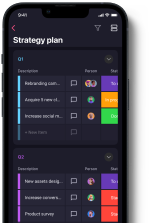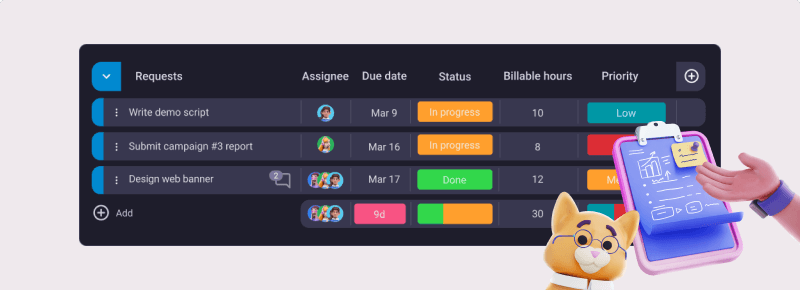Before starting work on a project, project managers have to communicate their plans and visions to their project team and clients.
This is where a project kickoff comes into play, as it is an essential meeting that helps put everyone on the same page from the get-go.
To help you nail your project kickoff, we provide 10 steps that will help you work your way through this important meeting.
So, keep on reading to find out more about kickoffs and why we need them.
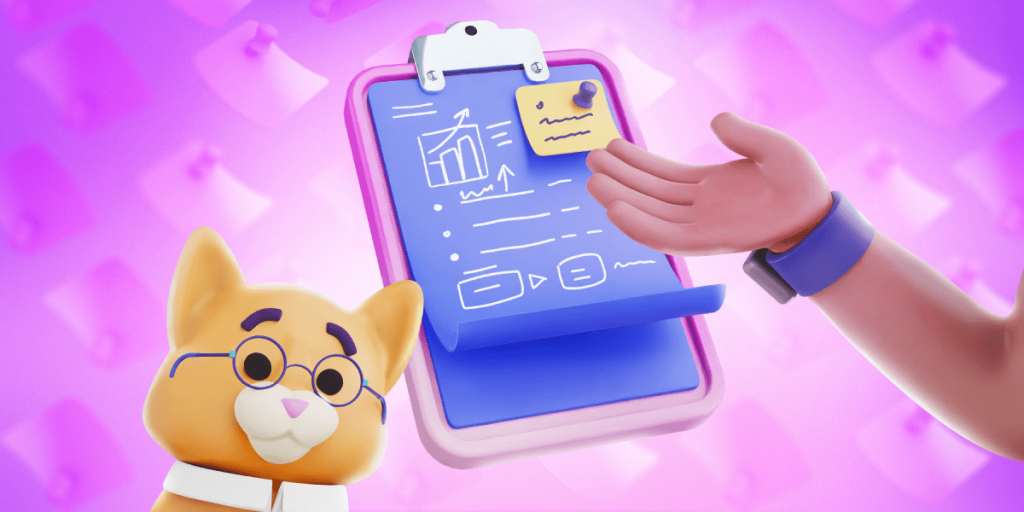
- Project kickoff meetings are used to prepare the ground for a successful project execution.
- There are 4 types of project kickoff meetings: internal, external, agile, and executive sponsor.
- There are 11 steps you should stick to when preparing the agenda for a kickoff meeting: 1. Get ready for the kickoff meeting, 2. Make introductions, 3. Start with the project background and purpose, 4. Share the project plan, 5. Define roles and responsibilities, 6. Define the methodology you’ll use on the project, 7. Pick suitable project management software, 8. Analyze potential risks, 9. Leave some time for questions, 10. Outline the next steps, 11. Do a post-meeting wrap-up
- Project kickoff meeting agenda and checklist are handy tools that help you organize a kickoff meeting and not miss a thing.
Table of Contents
What is a project kickoff meeting?
A project kickoff meeting is the first meeting held between project team members and a client or executive sponsor for the purpose of laying the groundwork for a project.
This type of meeting takes place right before the actual work on the project starts, and it is usually organized and held by the project manager.
In this meeting, the project manager presents the project scope, background, and purpose. The project manager discusses project objectives and timeline and makes sure everyone knows their roles and responsibilities.
Moreover, a kickoff meeting is a great opportunity for the project team and the client to match their expectations, introduce themselves, and discuss potential risks.
The end of the meeting is reserved for questions on anything the team might be concerned about.
Types of kickoff meetings
Although their purpose is much the same, not all kickoff meetings include the same participants.
There are 4 main types of project kickoff meetings:
- Internal project kickoff meeting,
- External project kickoff meeting,
- Agile project kickoff meeting, and
- Executive sponsor project kickoff meeting.
Now let’s discuss each of those.
Internal project kickoff meetings
As their name suggests, these kickoff meetings are held among internal team members. The idea is to align the project team so every team member has the same information about the project.
In addition, team members get a chance to clarify all their points of concern and discuss project issues so that when the meeting is over, they all have the same understanding of the project goals and objectives.
Internal kickoff meetings are held before projects such as boosting content production or launching an internal company platform.
Also, organizations might arrange internal kickoff meetings to mark the start of the new financial year or the formation of a new team to bolster team confidence and promote company culture.
External project kickoff meetings
External project kickoff meetings imply the participation of external stakeholders.
These meetings are also known as client-facing meetings because their purpose is to gather the project team and the clients in one place to discuss the project, align expectations, and establish a system of communication and collaboration.
These types of kickoff meetings are typical for companies that depend on their clients’ regular feedback, such as marketing or event planning agencies.
Agile project kickoff meetings
Many Agile projects run in Sprints that typically last 2–4 weeks. Project managers need to make sure their teams are coordinated during a Sprint.
Agile project kickoff meetings are hardly necessary after every Sprint, but it’s good practice to conduct them right before the beginning of a new project, when you reach a milestone, or when you onboard a new team member.
Executive sponsor project kickoff meetings
This is a high-level meeting with a focus on establishing project goals and objectives. It is organized to get executive sponsors on the same page and discuss the project’s business purpose and how it matches the company’s interests.
During this meeting, you’ll summarize key project information relevant to the executive sponsors and avoid details such as individual project milestones or listing the roles of all team members.
Project kickoff meetings with executive sponsors are conducted when you need to reflect on a project roadmap or software deployment.
Why should you have a project kickoff meeting?
A project kickoff meeting is supposed to get the team and the clients/executive sponsors on the same page before the start of the project execution.
It is a perfect opportunity to set the expectations for the project and direct all parties involved towards common project goals.
Additionally, kickoff meetings are a great way for the project team and stakeholders to meet and become familiar with all the roles and responsibilities. This creates an atmosphere of trust and prevents potential issues and conflicts that can arise later in the project and lead to missed deadlines, scope creep, or even project failure.
The fact that kickoff meetings are done in person reduces the chances of miscommunication and misinterpretation. By leaving some time for questions at the very end of the meeting, project managers are able to clarify any points that might have been left unclear.
11 Steps toward an effective project kickoff meeting
Every kickoff meeting is different, and its agenda depends on the type of the project and the participants.
For instance, a kickoff meeting with your team will cover all the nitty-gritty details of the project. On the other hand, this type of meeting with clients will focus more on the goals and objectives of the project and the desired outcome.
Whatever the case, there are some steps that need to be completed for the kickoff meeting to be successful.
Step #1: Get ready for the kickoff meeting
The kickoff meeting serves to prepare the team for project execution, but it, too, requires some planning.
So, to prepare for the kickoff meeting, make sure you do the following:
- Make a list of invitees — depending on the type of kickoff meeting, you should create a list of all attendees you consider relevant for the meeting.
- Organize a pre-kickoff meeting with your team — consider having a meeting with the internal team before the actual kickoff meeting with clients takes place. Introduce the team to the project, client, their background, and expectations.
- Set the time, date, and location — make sure all the attendees know when and where the meeting will take place.
- Assign a note-taker — pick a person to write meeting minutes. All the important points should be recorded in case some of the invitees cannot attend.
- Obtain detailed project information — by now, you should already have a project charter. This document gathers information on project goals, deliverables, and much more, so it’s good to have it around.
- Send out an agenda — create a clear agenda of everything that will be discussed and send it out to all participants. Feel free to include the project plan and timeline in the agenda as that will allow the attendees to think about the project in advance and prepare questions to ask during the meeting.
- Prepare documentation and check equipment — make available all relevant documents that you are planning to share with attendees so that everyone has a copy or online access to them. Also, don’t forget to check if the equipment you’ll be using works properly.
Step #2: Make introductions
At the beginning of the meeting, make sure that everyone introduces themselves first. Since this is the start of the project, some participants may not know each other.
For instance, some participants may be new to the team working on the project or may not know the client. The client also gets the opportunity to introduce themselves and share their perspective on the project.
You can even have some icebreaker questions prepared to dispel the anxiety. The participants can tell their names and positions, mention relevant previous experiences, etc.
This will create a relaxed atmosphere and establish better connections among the participants.
Step #3: Start with the project background and purpose
Dedicate the beginning of your project kickoff meeting to the project’s background and purpose. This is necessary because it gives clarity as to why the project is done and how it contributes to your company and the client.
The client can share their expectations and the main idea behind the project so that the team understands its purpose right at the beginning of the meeting.
Remember to define what success looks like and how you are planning to measure it. By explaining the background and what problem the project solves, you’ll align the whole project team and give them reasons to believe in the positive outcome and impact of their work.
Step #4: Share the project plan
Once you explain the project background and purpose, you can move on to the project plan review.
During this stage, you don’t have to cover all the project minutiae. If you have shared the project plan within the agenda, the participants should already be familiar with key information such as the project timeline and priority goals.
Also, make sure everyone understands project deliverables, milestones, and budget and try to be as clear as possible when you present them.
Step #5: Define roles and responsibilities
After the analysis of the project plan, the project manager should determine the roles and responsibilities of each member of the project team so that everyone understands where they fit.
This step is crucial for new teams or in case teams from different departments need to cooperate on the same project.
Assigning the roles and responsibilities during the kickoff meeting and discussing them will save you precious time later on during the project. By making clear who organizes tasks, who reports issues and to whom, or who is in charge of managing project-related paperwork, project managers can count on better work organization.
Step #6: Define the methodology you’ll use on the project
Now that you have assigned roles and responsibilities, you can inform the participants about the project management methodology that will be used throughout the project.
However, an experienced project manager knows that it takes more than just comparing methodologies, and it is hardly a random choice. Before choosing an adequate methodology, project managers need to consider project goals, resources, risks, and more.
Picking the right methodology boils down to the nature of the project and what a project manager wants to accomplish.
💡 Plaky Pro Tip
If you want to learn more about different project management methodologies, check out the following guide covering the most popular project management methodologies:
Step #7: Pick suitable project management software
Another important aspect of the project is choosing the appropriate project management software. According to project management statistics for 2023, 69% of project managers use software to plan and manage their projects.
For example, a handy tool you can use for planning your project is Plaky. Plaky is a free project and task management tool that enables you to track your project’s progress with the help of highly customizable boards.
Project managers can use Plaky to streamline their projects and:
- Upload project documentation,
- Assign tasks,
- Track progress and project data,
- Make comments on tasks they are subscribed to and get real-time notifications about updates,
- Set deadlines,
- Sort items by status, date, person, etc.
Plaky enables you to communicate with your clients, too. By granting them a viewer role, you can share progress and other information using the comment section available on each individual task card.
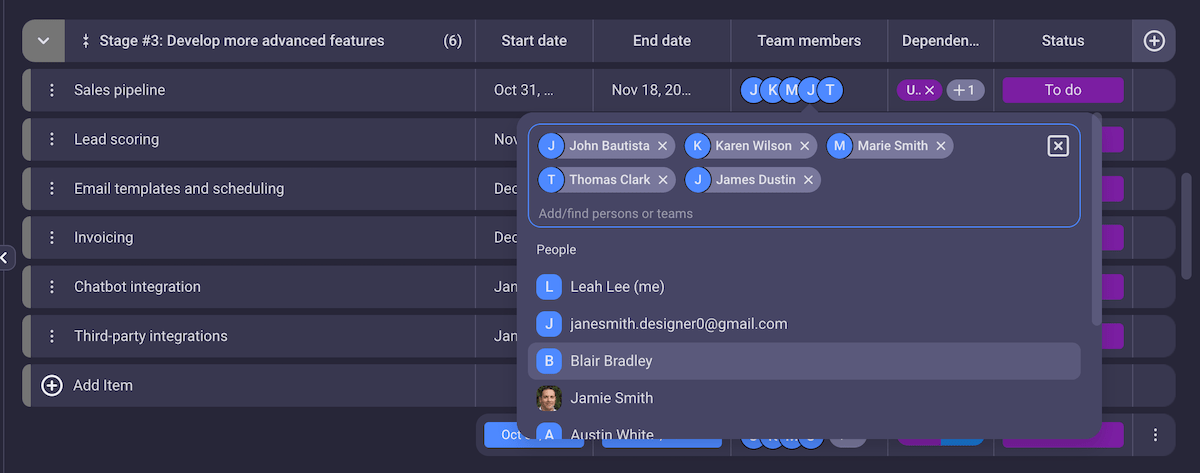
Aligning all these things at the beginning of the project makes project execution easier and more organized. Consequently, the danger of misunderstandings due to miscommunication is reduced to a minimum.
Step #8: Analyze potential risks
Even the best plans can go wrong. Therefore, it is essential to discuss potential project risks.
The attendees should identify potential risks and suggest means to mitigate them.
Being aware of possible threats enables the project team to prepare and react before things go awry.
💡 Plaky Pro Tip
Check out the following links to learn more about project risks and risk management:
Step #9: Leave some time for questions
Toward the end of the meeting, give the participants a chance to ask questions. Even though you may have been very detailed during your meeting, some ambiguities might remain.
So, make sure you leave some room to discuss any concerns or doubts the attendees may have. After all, the aim is to make sure people understand the project and their role in it.
Step #10: Outline the next steps
Before the project team rolls up their sleeves, share relevant contact information, useful documents, and resources. Delegate action items and recap the main points.
Close the meeting on a positive note and get your team into gear.
Step #11: Do a post-meeting wrap-up
You’ve just completed the project kickoff meeting successfully. Kudos to you. But, to be able to wrap it up, there are a few tasks left to complete.
Send a thank you email to all the attendees and share the meeting recording or transcript. You can also send a short summary of the topics discussed during the meeting and ask if anyone has any questions once again.
Once you’ve established all the vital information about the project during the kickoff, you’ll be ready to start the work on your project.
Why do you need a project kickoff agenda and checklist?
An agenda is a must for a successful and well-organized project kickoff meeting. Even though it might be time-consuming to prepare it for different kickoffs, consider it a roadmap for your meeting.
A project kickoff meeting agenda includes all relevant project data, helps you stick to the plan, and prevents wasting time on chit-chat. Send it to all team members and stakeholders for review before the meeting so that everyone is familiar with the main points.
We have prepared a sample agenda you can use as a starting point for your future kickoff meetings.
The template allows you to fill in the data on the location, date, and time of the meeting, attendees and their contact information, and the steps that will be covered during the meeting. Also, you have a stopwatch at your disposal to measure the duration of every step in the meeting agenda:
🔽 Project Kickoff Meeting Agenda Template
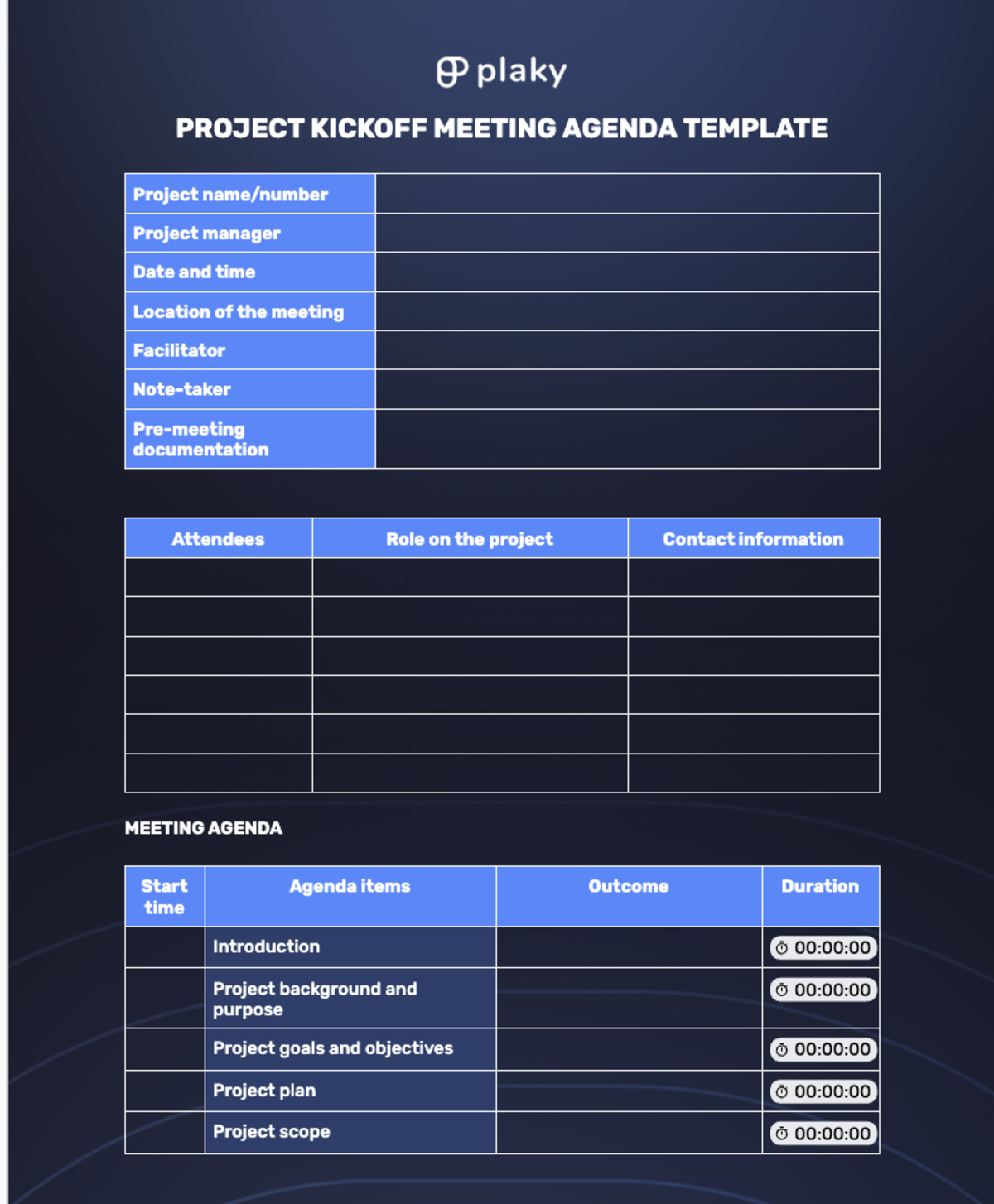
Another valuable document to have at hand is a project kickoff checklist. This list includes tasks you need to complete during the kickoff meeting. Feel free to use our sample checklist and customize it to your needs.
🔽 Project Kickoff Meeting Checklist
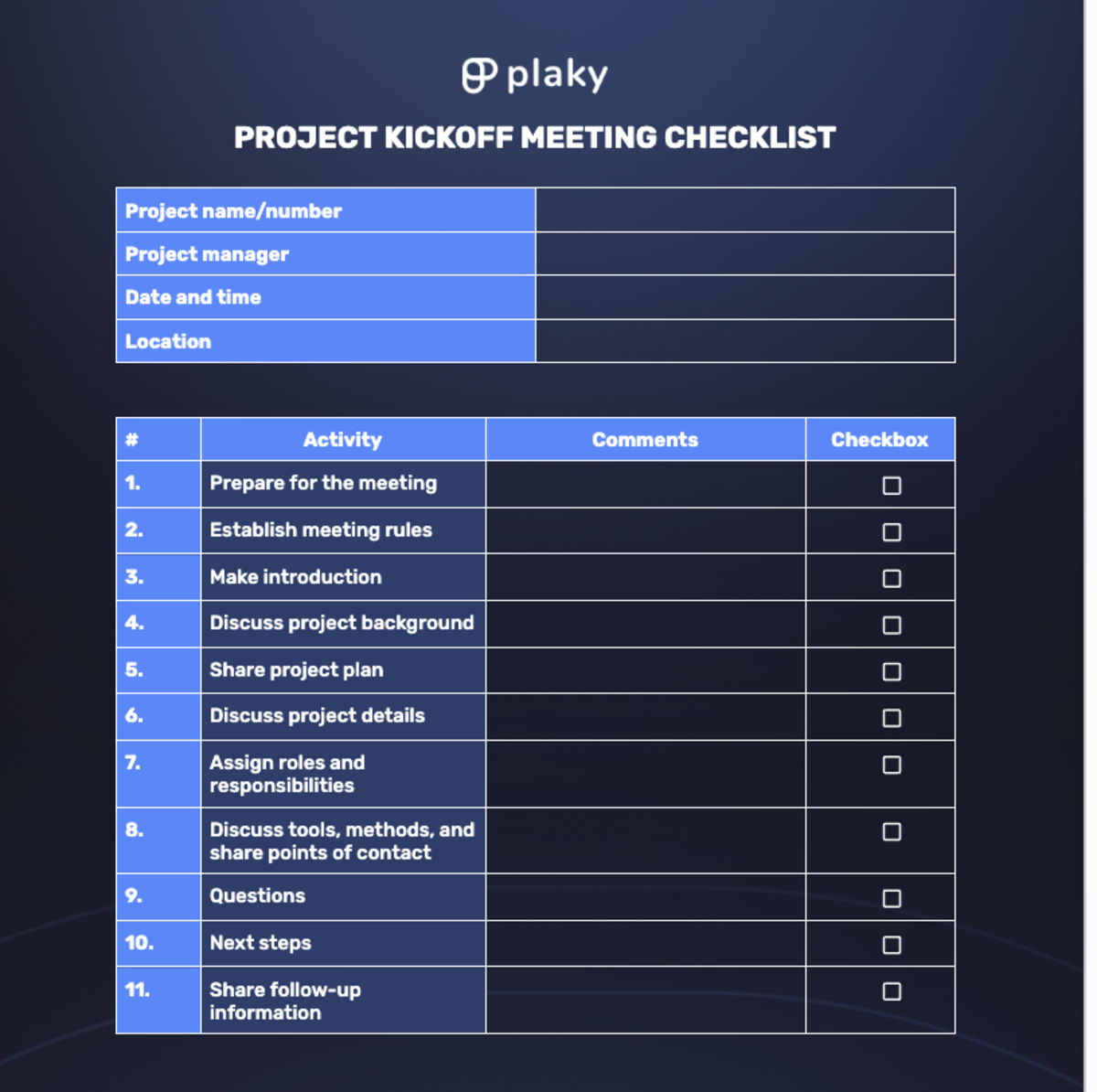
Take full control of your project tasks with Plaky
Plaky is a user-friendly task management tool that allows you to assign tasks to team members and notify them in real time.
You can easily manage your entire workload by creating boards, setting task status and priority, and adding different labels. Plaky enables you to define deadlines for each of the tasks and track their progress.
With Plaky, you can keep files and any project material within a particular item card for your task, and have a clear insight into all activities connected to the task in question.
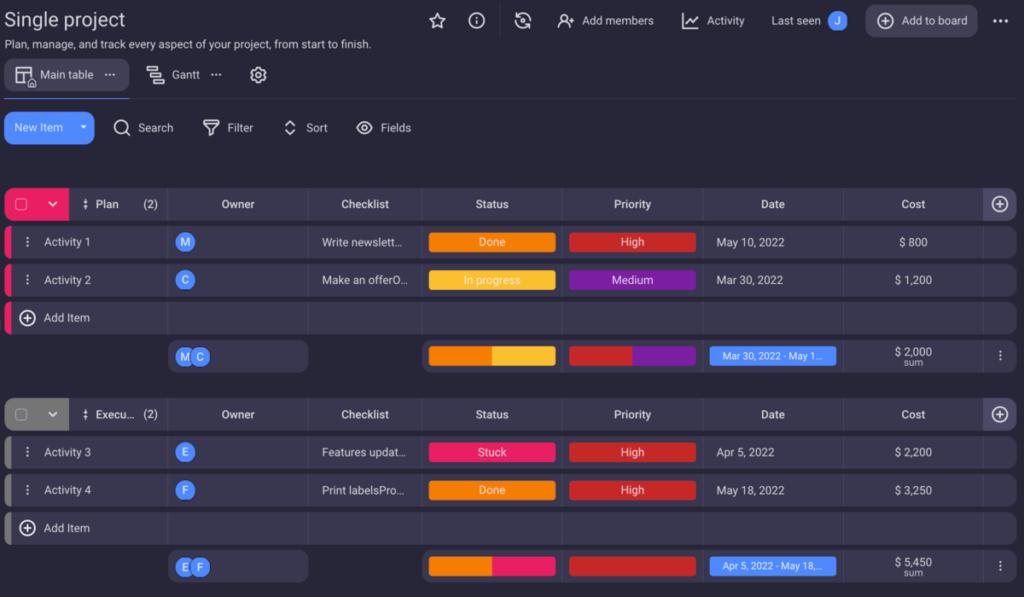
The organization of any project is far easier with the use of project management software. Having all project information in one centralized place will help you execute each project with no trouble. Sign up for Plaky’s free account today and give yourself a bird’s eye view of all project details.



